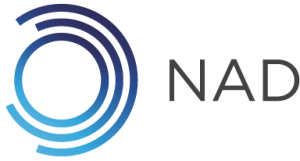Principal trainers are actively involved in designing, testing and improving the Inclusive Learning Approach (inclusive teaching component) modules.
The starting point
At the start of the work in Zambia and Zanzibar, a set of outline training materials was provided by the external training-of-trainers facilitator from EENET. These materials were based on inclusive education training messages and activities that had been tested and improved over many years in different contexts. The materials formed the basis of the training for principal trainers, but the principal trainers were expected to critique and adapt the materials.
In the initial projects in Zambia and Zanzibar, the principal trainers made important decisions about which topics should be added to the collection of modules, and in which order the modules should be delivered.
Adapting to context
In the subsequent expansion of the Inclusive Learning Approach (inclusive teaching component) through the TOFI programme in Uganda, Somalia, Mozambique and Ethiopia, further changes have been made to adapt the materials to each context. The biggest change has been to condense the 11 modules from Zambia and Zanzibar into 7 modules within the TOFI programme (we hope to share the set of 7 online soon!). This was done partly to ensure the training process could be completed within the 2-3 year timeframe of the TOFI funding. But the change was also based on learning from experience about which topics logically flowed well together.
In addition, a set of mini-modules was developed, based on extra topics that principal trainers, teachers and TOFI partners requested. (These will also be shared soon!)
Principal trainers make changes
During the training-of-trainers workshop on each module, principal trainers highlight information that does not make sense to them, activities that they think will not work in their cultural context, or facts and figures that could be inserted to make an activity more relevant to their context. They also have opportunities to practise facilitating most of the activities, and this leads to suggestions for how to make instructions simpler, how to make materials more contextually relevant, and which activities to add or remove.
Once the principal trainers start to deliver training to teachers, they are encouraged to adapt activities, insert their own case stories, invent new games and activities, and so on. They keep a record of their adaptations and teachers’ responses/feedback, and share these at the next training-of-trainers workshop. In this way, new ideas can feed into revisions of the modules and inspire their colleagues to be creative.
Further reading
Briefing paper: ‘Innovation in Inclusive Education Teacher Training. Sharing our Experiences’ (2019.) This paper (available in PDF and Word) answers a lot of frequently asked questions about the training approach, including how the modules get adapted.
Learn about other parts of the process.
This project is a collaboration between NAD and EENET.


